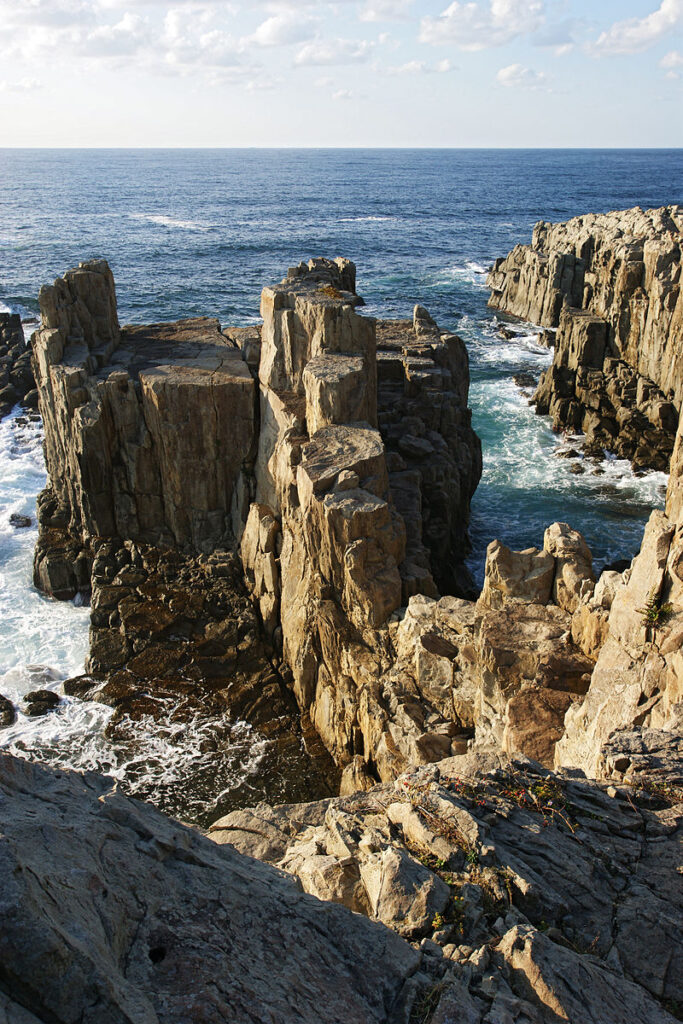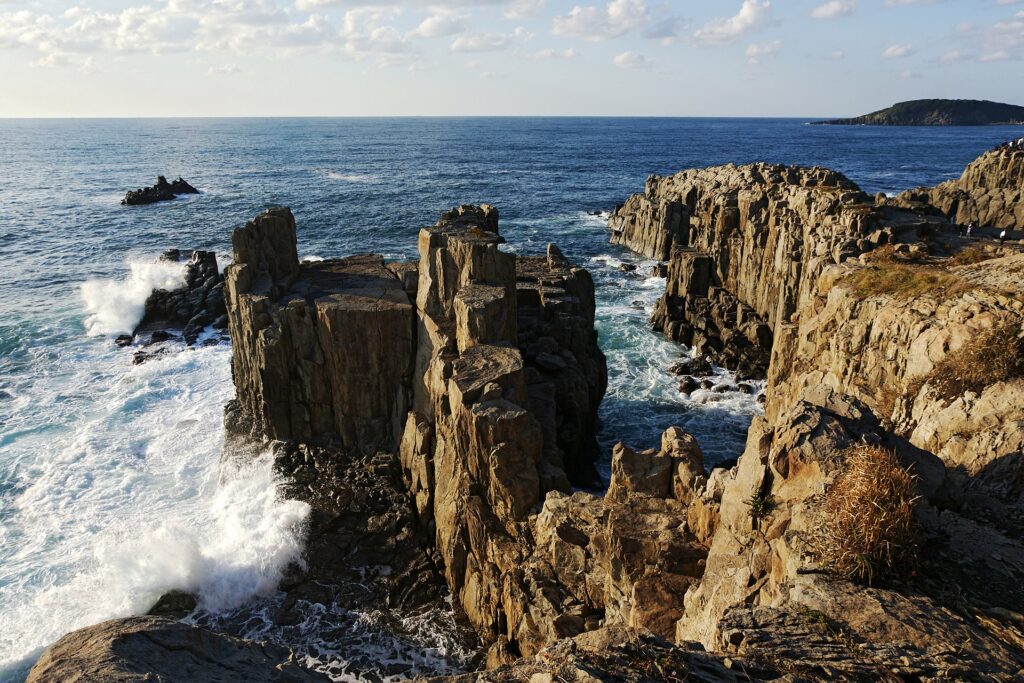The street leading to the Tojinbo cliffs is lined with the kind of souvenir shops you often see at famous shrines and temples. At the end is a terrace offering a fine panorama over the rocky coastline. From the terrace a path twists its way downwards towards the sea, alongside which people pose for photographs against the dramatic backdrop.
At the foot of the cliffs little passenger boats manoeuvre into inlets, while keeping a cautious distance from submerged rocks. Columns soar some twenty-five meters into the air. Geologically, the phenomenon is so rare as to be found in only two other places – Mt Geumgang in Korea and the east coast of Norway.
The path down is steep, and the slippery rocks are alarming. According to legend, the cliffs take their name from a corrupt priest lured here by resentful villagers and hurled over the edge. Did the Buddhist ecclesiast have karma on his mind as he plummeted towards his rocky end? Whatever the truth of the story, the cliffs went on to become a notorious suicide spot.
The Jesuit missionaries of the 17th century, men of keen intellect, noted that Japanese faced death with greater equanimity than other races. This was true not only of the samurai who trained for death, but of the populace in general (the most fervent Christian martyrs came from the peasant class). The subjugation of the ego is a factor in this, and one that at the same time makes Japan so pleasant a place to live because of the widespread modesty, humility and civility. At the end of life, it may make it easier to let go. People die as they live, we are often told.
In the Western mind suicide and Japan are closely linked, fostered by images of samurai committing seppuku (ritual suicide). Mishima’s spectacular death furthered the association. But pro-active measures in recent years have lowered the number, and in 2019 Japan ranked twenty-fifth in per capita terms, below the US. The biggest category is of men who cannot support their family, either by business failure or losing their job. The forest at Aokigahara near the base of Mt Fuji is notorious as a suicide spot, but sadly a more common means is throwing oneself in front of a train or subway. Apart from the emotional stress for drivers, it can also be a cause of great hardship for families left behind who are responsible for debts caused by damage, cleaning up and disruption to services.
In recent years suicides at Tojinbo have also shown a sharp decrease, mainly thanks to a former policeman, Shige Yukio. His job included pulling bodies out of the sea, and on retirement he set about tackling the problem. Together with a handful of volunteers he initiated patrols, and over 18 years they talked to as many as 650 desperate people. As a result the suicides have been drastically reduced, testimony to the difference a single person can make.



Fascinating post and amazing photos
Thank you for writing in. It is always apprediated to get such feedback…
Hi John,
Loving this series of posts!
As for the rarity of the Tojinbo cliffs geology are 12 Apostles off the coast of Australia a fourth example? Unsure if Tojinbo geology differs or maybe the locals are unaware of 12 Apostles.
Thank you, Benjamin, for taking the troulbe to write in. As for matters of geology, I’m afraid it is beyond my experitse, but it is good to know about the 12 Apostles. I shall investigate…